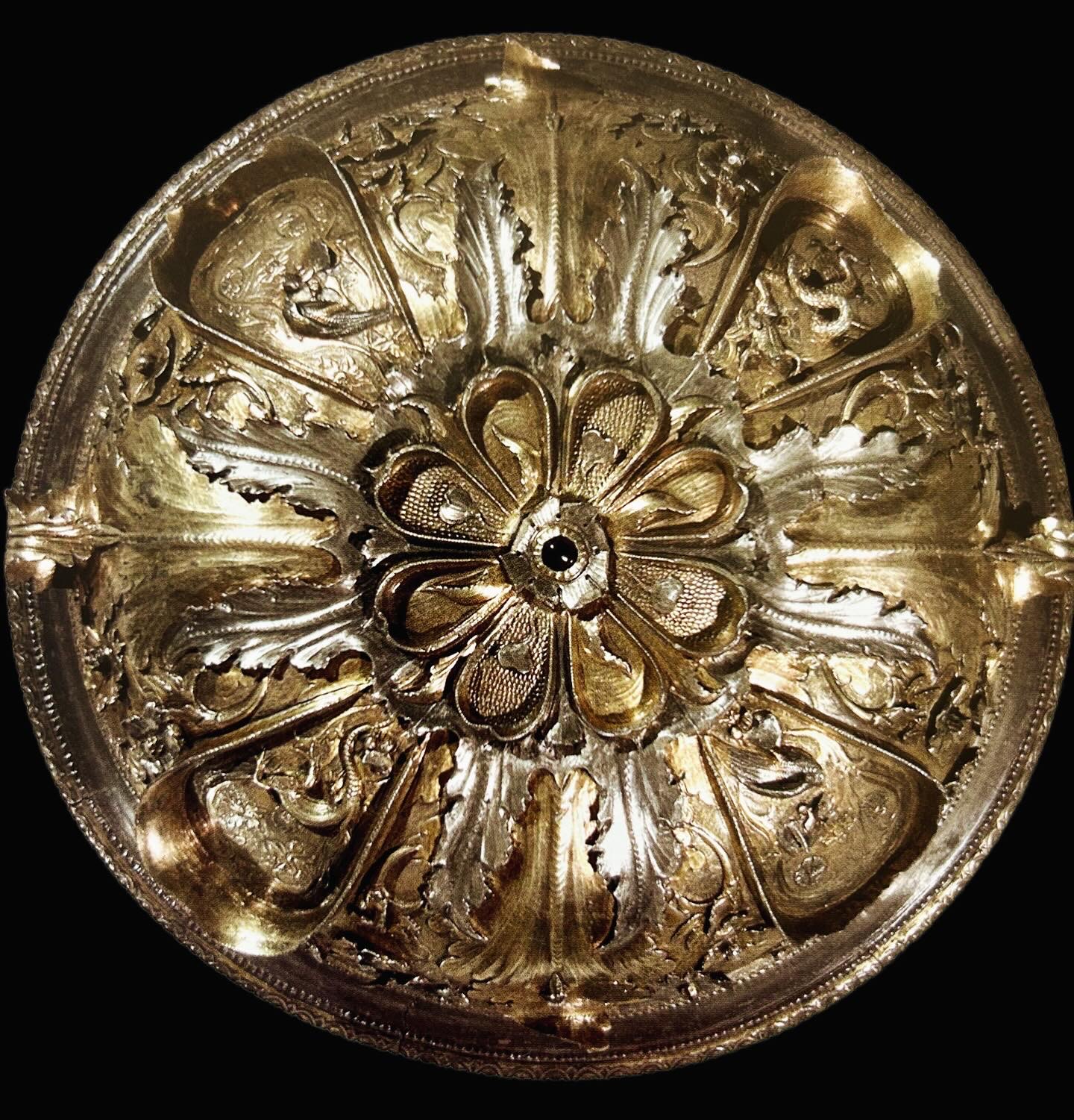During the century after the death of Alexander the Great, the Seleucid dynasty dominated most of Near East from Asia Minor to Pakistan. Their royal courts also became booming artistic centers, and adept at transforming the vast wealth suddenly available to them into exceptionally fine tableware.
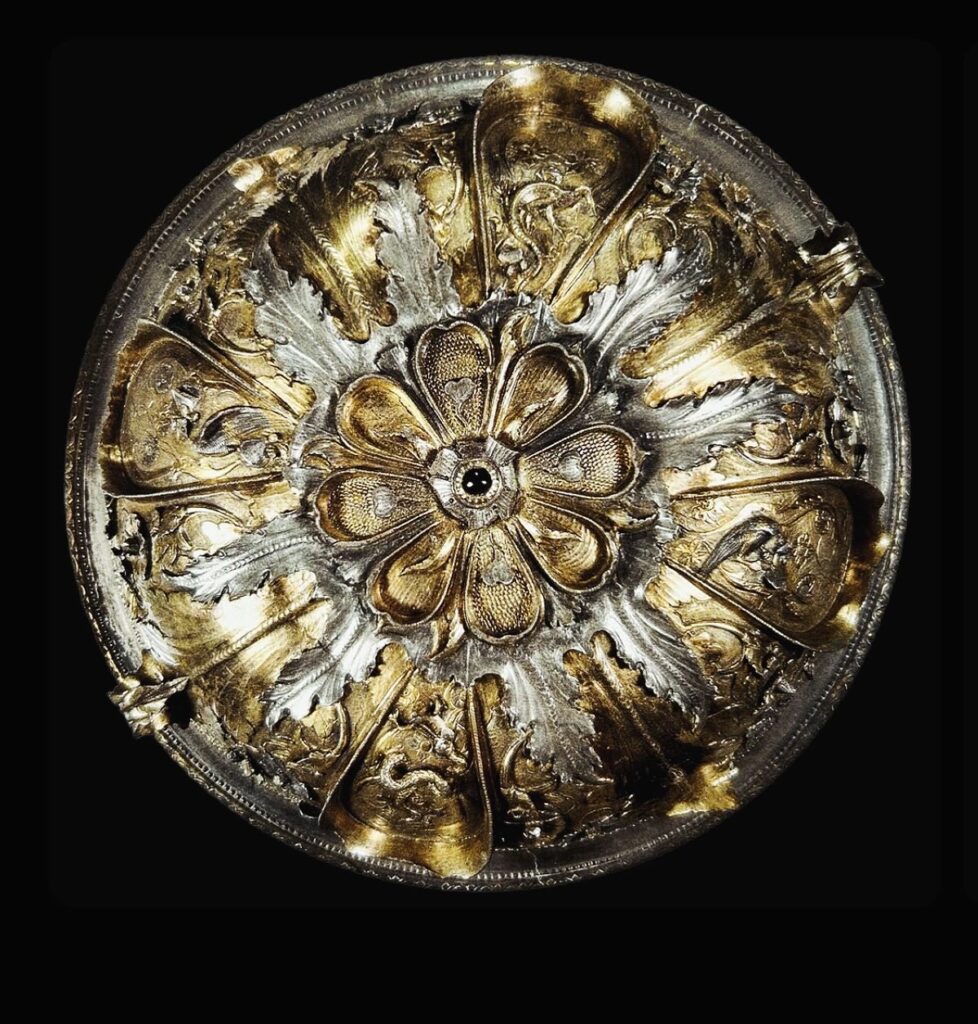
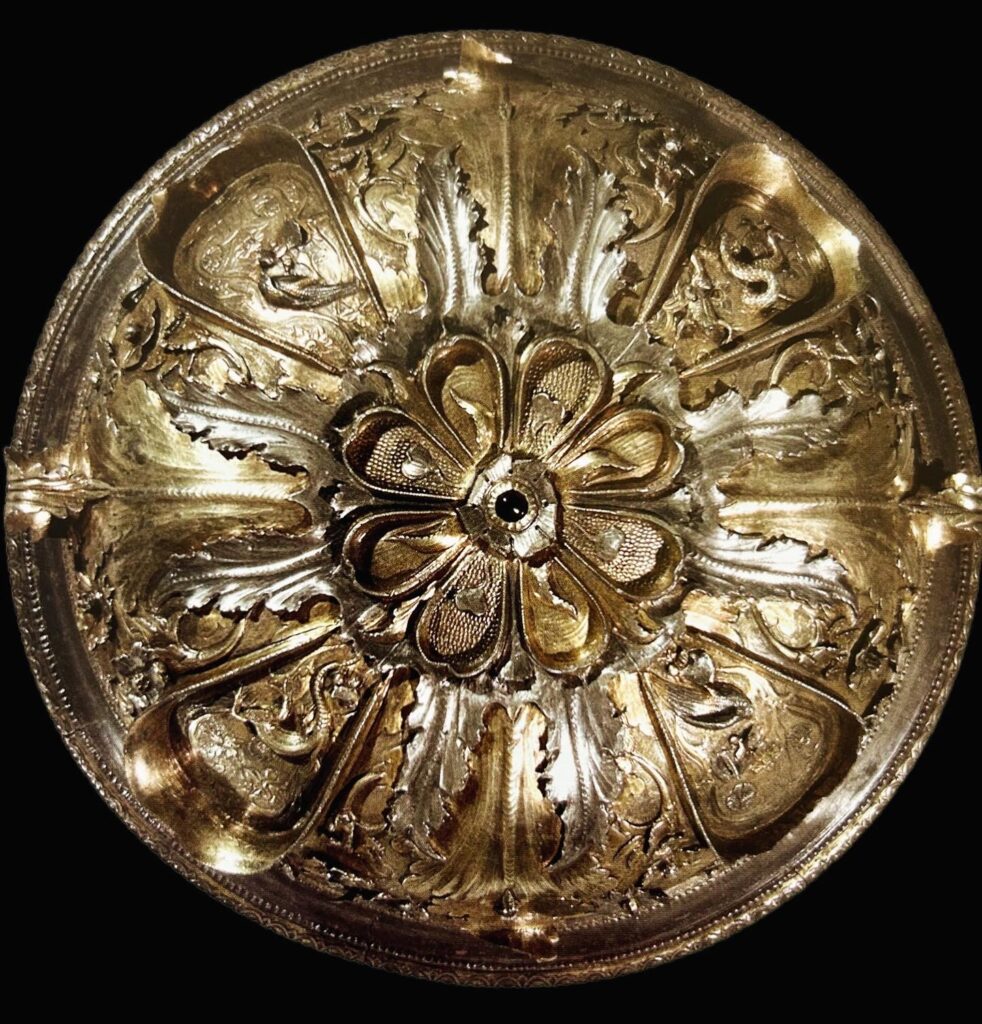
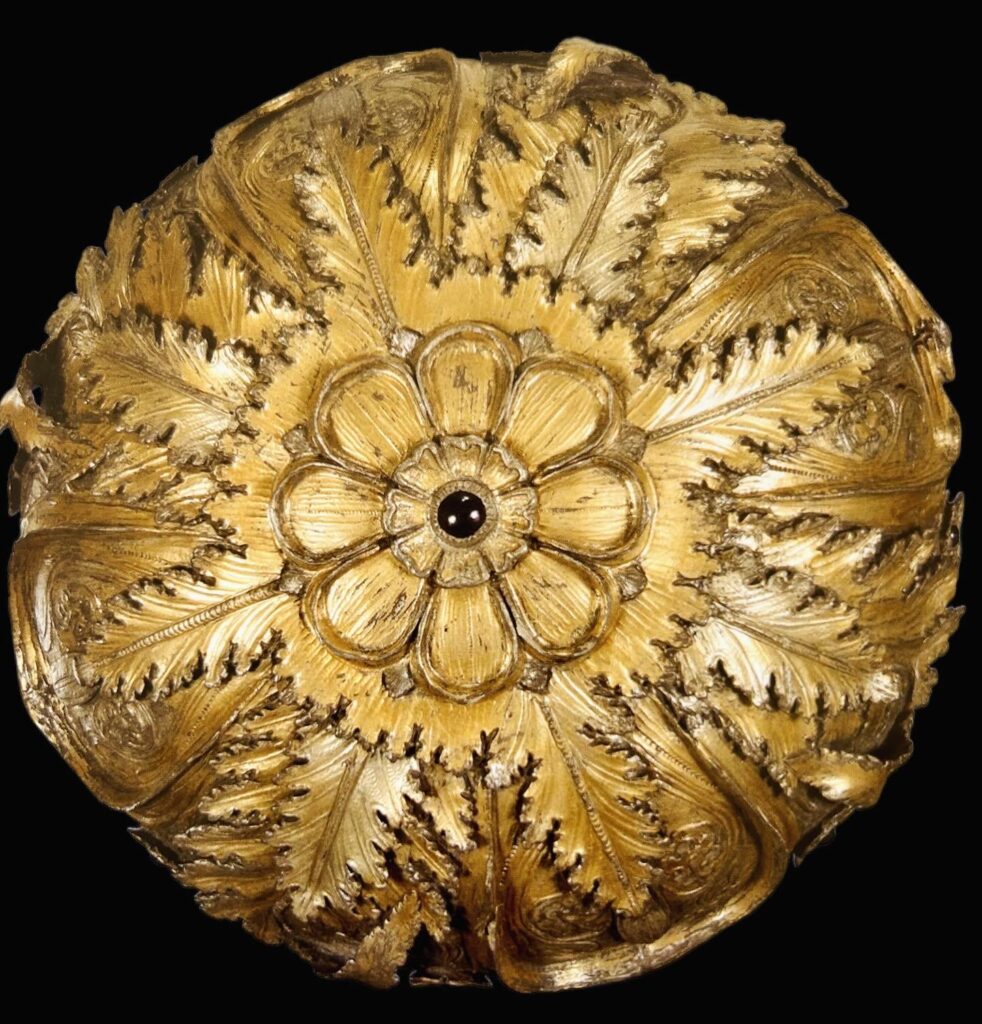
These three cups (I’ve shown the profile of one and the underbellies of all three) were found together in 1810 near Civita Castellani (Falerii Novi), buried together in a cache that included a silver rhyton in the form of a centaur (featured in an earlier post). Taken together, they are usually considered to be Seleucid workmanship.
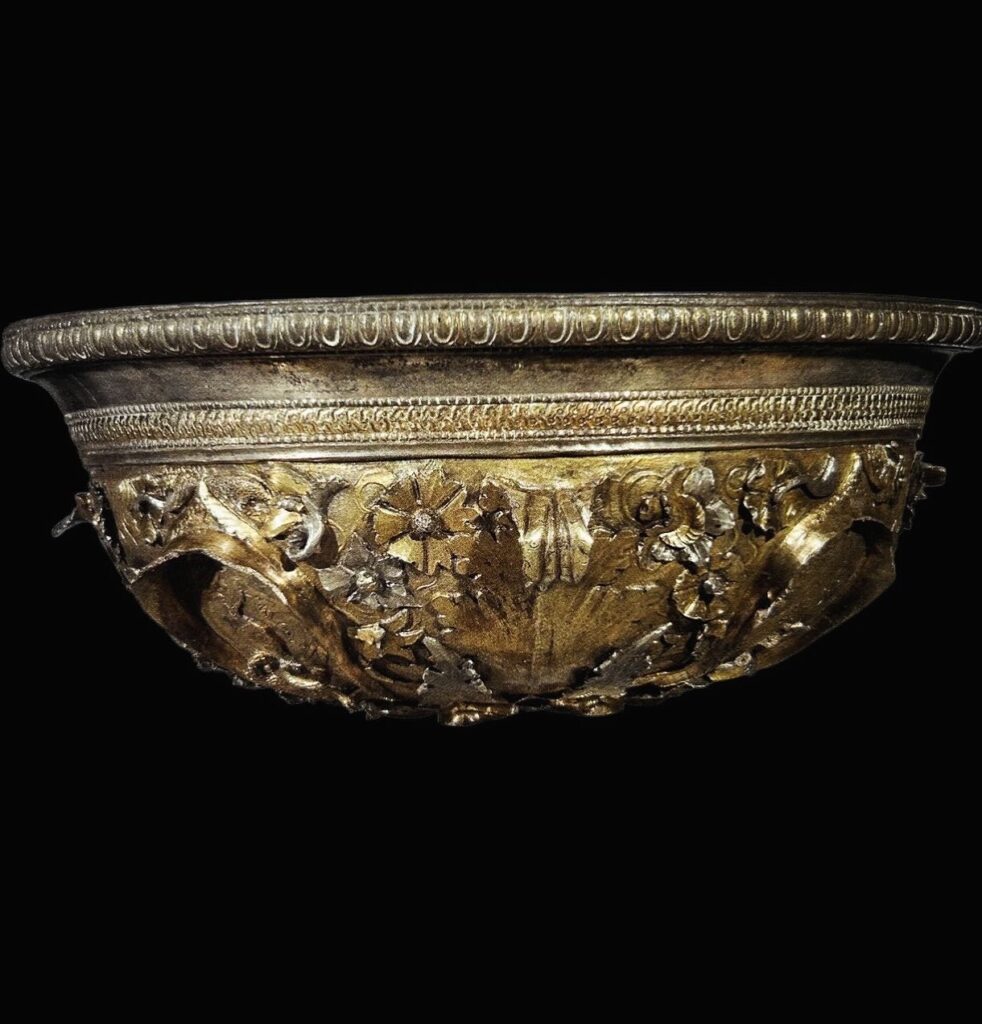
And they are stunners! Measuring 18.3 cm diameter, they’re big and essentially handle/less (perfect for being cupped in a banqueting conqueror’s palm). The smooth inner cups are completely adorned on the exterior with hammered gilt cutouts of wildly naturalistic, crunchy acanthus leaves, vines and rosettes. And best of all the very center of each underside (the omphalos, or belly-button) is bedazzled with a large garnet cabochon. They must have borne witness to some pretty excessive parties, and one wonders about whoever buried them in the Italian hinterlands – perhaps a soldier of fortune, stashing his booty planning to return and have a victory drink?

